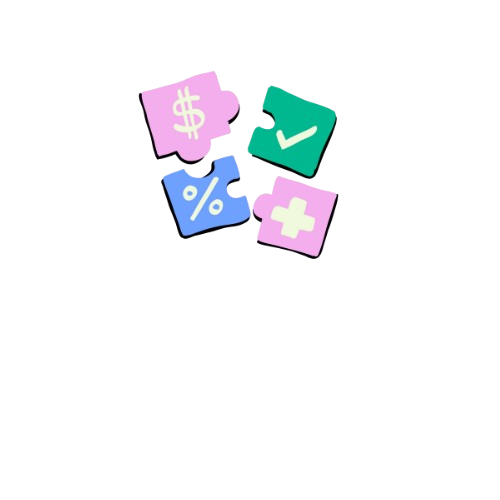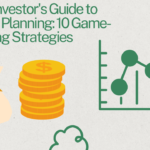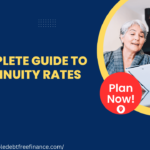In the wake of economic uncertainties and rising living costs, an increasing number of UK residents find themselves ensnared in the complex web of debt. From the creeping balance of credit cards to the weight of personal loans and the long shadow of mortgage payments, debt can cast a pall over daily life, turning financial freedom into a seemingly distant dream.
But take heart – there’s a way out of the labyrinth.
This comprehensive guide illuminates the path forward, shining a light on the myriad debt elimination strategies available in the UK. We’ll navigate the terrain of financial recovery together, exploring tried-and-tested methods and innovative approaches that can help you regain control of your finances. Whether you’re dealing with a mountain of debt or looking to eliminate smaller balances, you’ll find valuable insights to chart your course towards a debt-free future
Understanding Your Debt
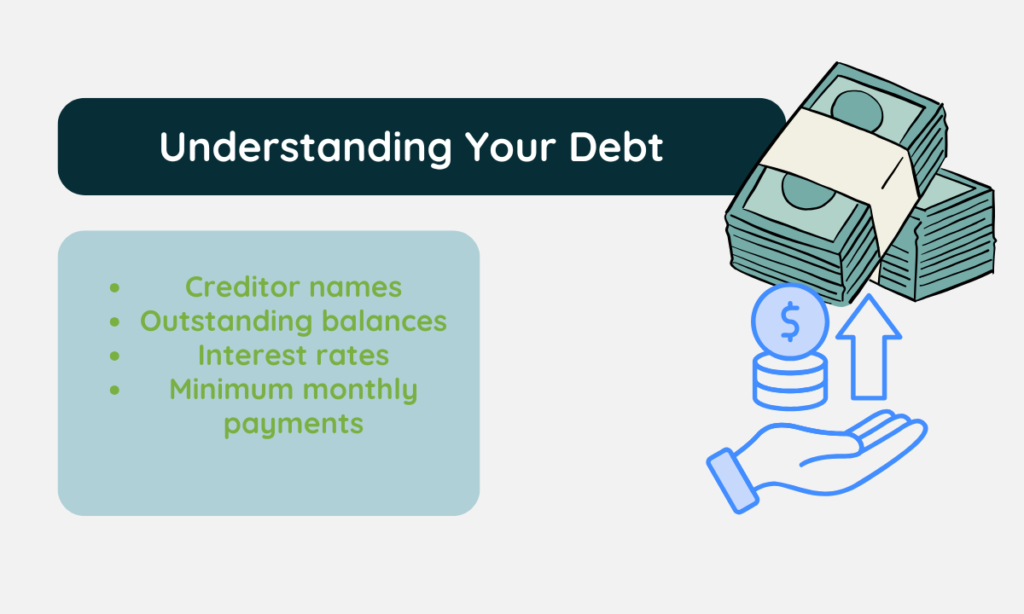
Before diving into specific strategies, it’s crucial to understand your debt situation. Start by listing all your debts, including:
- Creditor names
- Outstanding balances
- Interest rates
- Minimum monthly payments
This overview will help you prioritize and choose the most effective debt elimination strategy for your situation.
1. The Debt Snowball Method
The Debt Snowball method, popularized by financial guru Dave Ramsey, focuses on paying off the smallest debts first while maintaining minimum payments on larger debts.
How it works:
- List your debts from smallest to largest.
- Make minimum payments on all debts except the smallest.
- Put any extra money towards the smallest debt.
- Once the smallest debt is paid off, move to the next smallest.
Pros:
- Quick wins provide psychological motivation
- Simplifies the debt repayment process
Cons:
- May pay more in interest over time compared to other methods
The Debt Snowball method is particularly effective for those who need motivation to stay on track with their debt repayment plan.
2. The Debt Avalanche Method
The Debt Avalanche method prioritizes paying off debts with the highest interest rates first.
How it works:
- List your debts from highest to lowest interest rate.
- Make minimum payments on all debts.
- Put any extra money towards the debt with the highest interest rate.
- Once the highest-interest debt is paid off, move to the next highest.
Pros:
- Saves more money on interest in the long run
- Mathematically the most efficient method
Cons:
- May take longer to see tangible progress, which can be demotivating for some
The Debt Avalanche method is ideal for those who are motivated by long-term savings and have the discipline to stick with the plan.
3. Debt Consolidation
Debt consolidation involves combining multiple debts into a single loan, ideally at a lower interest rate.
How it works:
- Take out a new loan to pay off existing debts.
- Make a single monthly payment on the new loan.
Pros:
- Simplifies repayment with a single monthly payment
- Potentially lower interest rate
- Can improve credit score if payments are made on time
Cons:
- May extend the repayment period
- Requires discipline to avoid accumulating new debt
Debt consolidation can be an effective strategy for those with multiple high-interest debts who qualify for a lower-interest consolidation loan.
4. Individual Voluntary Arrangement (IVA)
An IVA is a formal agreement between you and your creditors to repay your debts over a set period, usually five to six years.
How it works:
- Work with an insolvency practitioner to propose an IVA to creditors.
- If approved, make regular payments to the insolvency practitioner.
- The practitioner distributes payments to creditors.
- After the IVA term, remaining debts are typically written off.
Pros:
- Legally binding on creditors
- Stops most creditor action
- Portion of debt may be written off at the end
Cons:
- Affects credit rating for six years
- Fees involved for insolvency practitioner
- Strict budgeting required
An IVA might be suitable for those with significant debts who can afford regular payments but need more time and some debt forgiveness.
5. Debt Management Plan (DMP)
A DMP is an informal agreement with creditors to repay debts at an affordable rate, usually arranged through a debt charity or company.
How it works:
- Work with a debt advisor to create a budget and determine affordable payments.
- The advisor negotiates with creditors on your behalf.
- Make a single monthly payment to the debt management company.
- The company distributes payments to creditors.
Pros:
- Can reduce monthly payments
- May freeze interest and charges
- Stops direct contact from creditors
Cons:
- Not legally binding; creditors can still take action
- May take longer to repay debts
- Can affect credit rating
A DMP can be a good option for those who can afford some repayment but need reduced payments and simplified debt management.
6. Bankruptcy
Bankruptcy is a legal process to clear debts when you’re unable to pay them. It’s typically considered a last resort.
How it works:
- Apply for bankruptcy online or through the court.
- If approved, control of your assets passes to the Official Receiver.
- Most debts are written off after one year.
Pros:
- Most debts are written off
- Creditors can’t take further action
- Provides a fresh start in extreme cases
Cons:
- Severe impact on credit rating for six years
- May lose assets, including your home
- Affects future borrowing and employment prospects
Bankruptcy should only be considered in extreme cases when other debt solutions are not viable.
7. Debt Relief Order (DRO)
A DRO is an alternative to bankruptcy for those with low income/assets and debts under £30,000.
How it works:
- Apply through an authorized debt advisor.
- If approved, most debt repayments and interest are frozen for 12 months.
- If your financial situation doesn’t improve, debts are written off after 12 months.
Pros:
- Cheaper than bankruptcy
- Most debts written off after 12 months if situation doesn’t improve
- Creditors can’t take action without court permission
Cons:
- Strict eligibility criteria
- Affects credit rating for six years
- Restrictions on financial activities during the DRO
A DRO can be an effective solution for those with low income, few assets, and relatively low levels of debt.
8. Balance Transfer Credit Cards
Balance transfer cards allow you to move high-interest credit card debt to a new card with a 0% or low-interest introductory period.
How it works:
- Apply for a balance transfer credit card.
- Transfer existing credit card balances to the new card.
- Repay the debt during the 0% or low-interest period.
Pros:
- Can save significant money on interest
- Consolidates multiple credit card payments
- Provides time to pay off debt without accruing additional interest
Cons:
- Usually requires a good credit score to qualify
- May have balance transfer fees
- Risk of accumulating more debt if not used responsibly
Balance transfer cards can be an excellent strategy for those with good credit and the discipline to repay the debt during the introductory period.
9. Budgeting and Cutting Expenses
Creating a strict budget and reducing expenses is a fundamental strategy for any debt elimination plan.
How it works:
- Track all income and expenses for a month.
- Identify areas where spending can be reduced.
- Create a budget allocating more money towards debt repayment.
- Stick to the budget and regularly review progress.
Pros:
- Increases awareness of spending habits
- Frees up more money for debt repayment
- Develops good financial habits for the future
Cons:
- Requires significant discipline and lifestyle changes
- May take longer to see results compared to other strategies
Budgeting and expense cutting should be part of any debt elimination strategy, regardless of which other methods you choose.
10. Increasing Income
Finding ways to increase your income can accelerate your debt repayment journey.
Strategies include:
- Asking for a raise at your current job
- Seeking a higher-paying position
- Taking on part-time or freelance work
- Starting a side business
Pros:
- Can significantly speed up debt repayment
- Develops new skills and opportunities
- Potential for long-term income increase
Cons:
- May require significant time and effort
- Additional income may be inconsistent
Increasing income can be a powerful complement to other debt elimination strategies, especially when the additional funds are dedicated entirely to debt repayment.
Choosing the Right Strategy
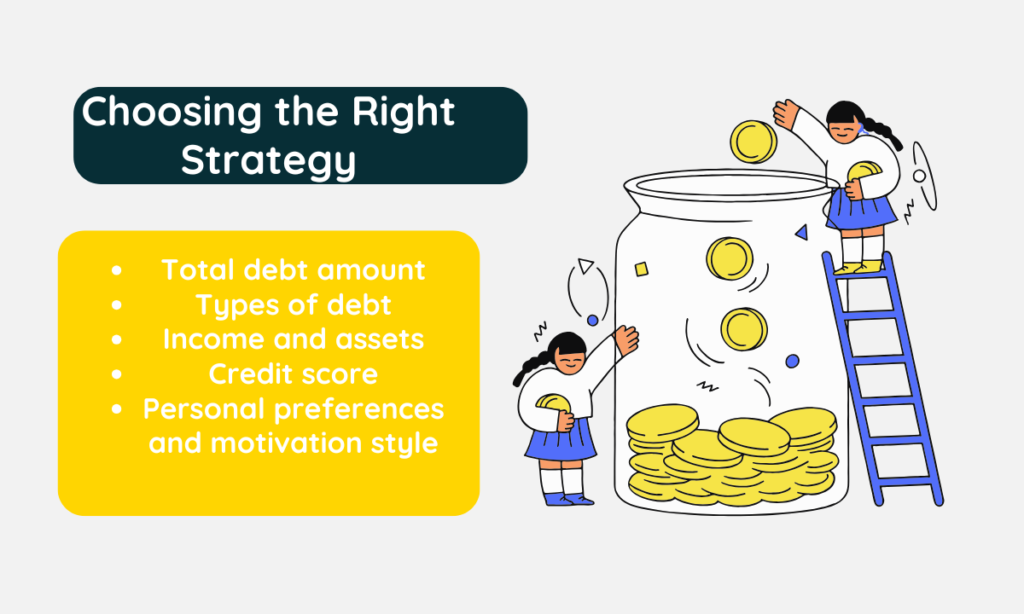
The best debt elimination strategy depends on your individual circumstances. Consider factors such as:
- Total debt amount
- Types of debt
- Income and assets
- Credit score
- Personal preferences and motivation style
It’s often beneficial to combine multiple strategies. For example, you might use the Debt Avalanche method while also budgeting, cutting expenses, and seeking ways to increase your income.
Seeking Professional Advice
If you’re unsure which strategy is best for your situation, consider seeking advice from a professional debt advisor. In the UK, organizations like StepChange, Citizens Advice, and the Money Advice Service offer free, impartial debt advice.
Conclusion
Eliminating debt is a journey that requires commitment, patience, and often a combination of strategies. By understanding the various options available and choosing the approach that best fits your situation, you can create a clear path towards financial freedom. Remember, the most important step is to start. With persistence and the right strategy, you can overcome your debt and build a stronger financial future.
